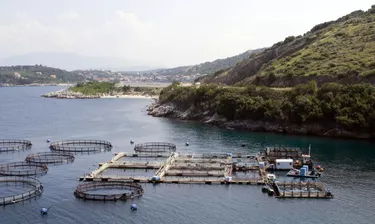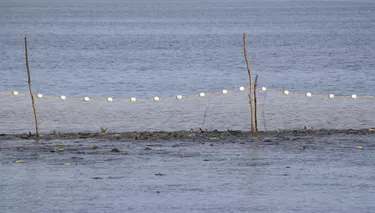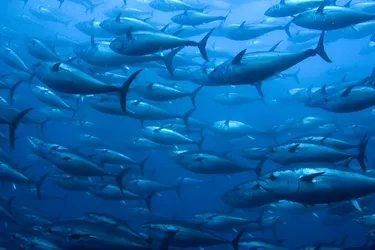
Figuring the costs of beginning a fish farm takes time to plan and research. Potential fish farmers should always have a detailed idea of how much capital the fish farming venture will need. Knowing this information can be the difference between a loan approval or denial.
About 50 percent of small businesses fail within the first 5 years, according to the U.S. Small Business Administration. Planning ahead of time helps fish farmers to financially prepare for the initial start-up and operating costs of a new fish farm.
Video of the Day
Video of the Day
Aquaculture in the United States

The 2005 Census of Aquaculture conducted by the U.S. Department of Agriculture determined that domestic fish farmers faced challenges from foreign producers and the upswing of energy costs; a trend that was expected to continue.
The American Recovery and Reinvestment Act of 2009 authorized a 2008 Aquaculture Grant Program to provide fish farmers and producers with up to $50 million in assistance for lost profits from cost inflation for feed in 2008, according to a notice by the Federal Register.
Types of Fish Farms

Farming fish consists of more than just selecting the species to raise. Farmers must choose to either raise a single species in a pond, a monoculture or several species in a single pond, a polyculture.
Some of the most popular fish species to farm are bass, trout, catfish, tilapia, carp and ornamental fish. Fish farms may also function differently depending on the producer's chosen industry like consumer products, sport fishing ponds and fishery research laboratories.
For more details on how to run a fish farm, read Small Scale Freshwater Fish Farming from the Agromisa Foundation (see Resources).
Start-up Costs

Determine the start-up costs of a fish farm by adding the essential equipment needed to begin the farm. Be sure to include operating cost estimates and money to cover unforeseen circumstances.
Contact your closest state cooperative extension agency to get a better idea of what equipment will be needed to start a successful fish farm in your area. Costs will vary according to region. Consider these questions from the Minnesota Sea Grant's article on fish farming to help calculate a start-up cost estimate for a fish farm:
Do you have most of the equipment and machinery needed? Do you have the necessary financial resources? Can you secure capital and operational loans for fish farming from your bank? Is the profit potential of fish higher than that of other potential investments? Will the expected profit be adequate compensation for your labor, management and risk? Will investment and operating capital interest rates permit a reasonable profit? Is fish the best alternative for the land you intend to use? Can you afford to forego income until you sell your first crop? Are you able to absorb occasional losses? Are you willing to devote the daily labor and management required?
Operating Costs

Operating costs are equally important to a fish farm's budget. Farmers must be prepared for insurance costs, employee pay, business costs, taxes, equipment and maintenance--just to name a few.
Depending on how a producer attains capital for the fish farm, a loan or savings, reserve enough capital to allot for about a year's worth of operating costs. Refer to the U.S. Small Business Administration's small business start-up guide to find examples of financial assistance and business planning practices (see References).
Funding a Fish Farm

Finding capital and financial resources to start a fish farm isn't as difficult as actually beginning a fish farm.
To raise capital, you'll need to have a business plan already in place with a detailed explanation of how you plan to use the funds. Saving money is a good way to begin funding a fish farm. Other financial options include private loans or federally backed loans from the U.S. Department of Agriculture or the Small Business Administration and grants.
Indiana Fish Farming.com provides general information and resources on financing a fish farm for beginning farmers. Check with other governmental departments like the U.S. Fish and Game Commission, local cooperative extension offices, conservation and fisheries officers, college agricultural or aquaculture professors, fish farming associations and other federal and nonprofit grant programs for more funding opportunities and financial information.